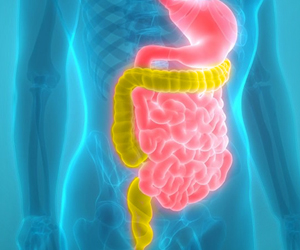Ever wondered why some people are just so much better at reigning in the temptation for a favourite calorie-laden dessert than others? Now, US scientists have pinned down the 'self control' factor to the "angel" centre in the brain which holds back another "devil" area to stop individuals giving in to temptation.
Scientists from the California Institute of Technology (Caltech) have uncovered differences in the brains of people who are able to exercise self-control versus those who find it almost impossible.The key in the research is, while everyone uses the same single area of the brain to make these sorts of value-laden decisions, a second brain region modulates the activity of the first region in people with good self-control, allowing them to weigh more abstract factors like healthiness - in addition to basic desires such as taste to make a better overall choice.
The study has been published in the May 1 issue of the journal Science.
"A very basic question in economics, psychology, and even religion, is why some people can exercise self-control but others cannot," notes Antonio Rangel, a Caltech associate professor of economics and the paper's principal investigator.
"From the perspective of modern neuroscience, the question becomes, 'What is special about the circuitry of brains that can exercise good behavioral self-control?' This paper studies this question in the context of dieting decisions and provides an important insight," he added.
That insight was the result of an innovative experiment: A group of volunteers- all self-reported dieters- were shown photos of 50 foods, including everything from Snickers bars to Jello to cauliflower. The participants were asked to rate each of the foods based on how good they thought that food would taste. Afterwards, they were shown the same slides again and asked to rate each of the foods based on its supposed health benefits.
Advertisement
The participant was then shown the 50 items one final time and was asked to choose between it and the index item. (To keep the choosers "honest" without forcing them to eat 50 different foods in one sitting, the researchers would randomly select a number corresponding to one of the slides, and the participant would have to eat whichever food had been chosen at that point.)
Advertisement
After all the choices had been made, the researchers were able to pick out 19 volunteers who showed a significant amount of dietary self-control in their choices, picking mostly healthy foods, regardless of taste. They were also able to identify 18 additional volunteers who showed very little self-control, picking what they believed to be the tastier food most of the time, regardless of its nutritional value.
When they looked at the brain scans of the participants, researchers found significant differences in the brain activity of the self-control group as compared to the non-self-controllers.
Earlier studies have shown that value-based decisions are reflected in the activity of a region in the brain called the ventromedial prefrontal cortex, or vmPFC.
If activity in the vmPFC goes down, explains Todd Hare, a postdoctoral scholar in neuroeconomics and the first author on the Science paper, "it means the person is probably going to say no to that item; if it goes up, they're likely to choose that item."
In the non-self-controllers, Rangel notes, the vmPFC seemed to only take the taste of the food into consideration in making a decision.
"In the case of good self-controllers, however, another area of the brain-called the dorsolateral prefrontal cortex [DLPFC]--becomes active, and modulates the basic value signals so that the self-controllers can also incorporate health considerations into their decisions," he explains.
Source-ANI
TAN/L













